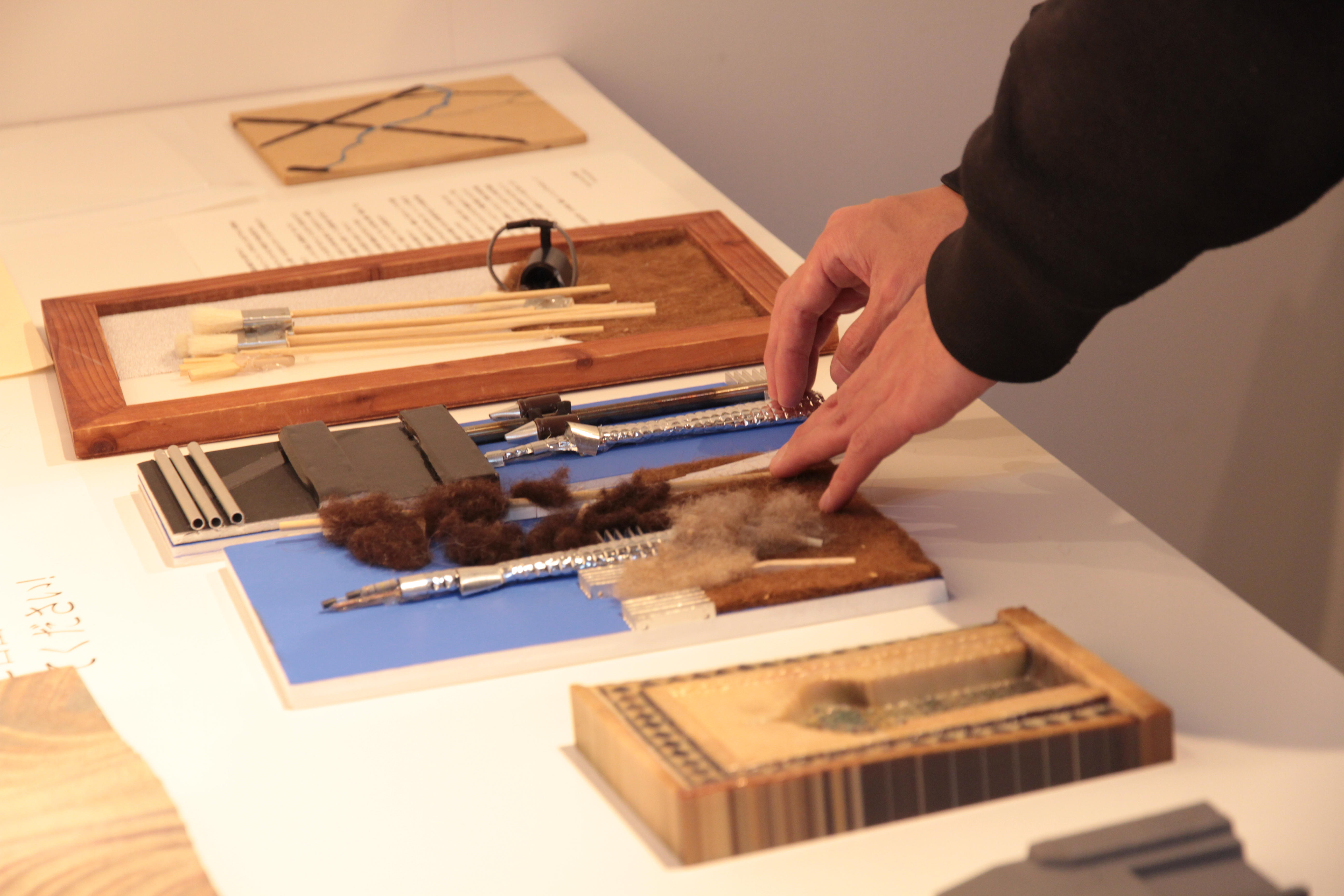Listening, 1996-1998
Ceramic, epoxy, gold leaf, Encre de Chine
I: 28 x 16 x 15 1/2"
II (with lid) 29 x 15 1/4 x 15 1/2
Biting, 1995-1998
Ceramic, epoxy, gold leaf, Encre de Chine
Vase 1: 30 x 21 x 21"
Vase 2: 29 x 16 x 14"
Swallowing, 1999-2007
Ceramic, epoxy, gold leaf, Encre de Chine
Jug: 24 x 12 x 16 1/5"
Vase: 27 3/4 x 13 x 12 1/2"
Three-Legged Plate: 21 x 20 x 20"
From his earliest exhibitions in the late seventies and early eighties, Lord has used clay as a medium of fine art to explore various subjects. While these subjects are as varied as silhouettes of artists and writers traced by the outer contours of a vase or pendent fragments modeled from his own body, Lord’s work grasps sensation as physical form. He translates the action of the senses—hearing, seeing, tasting, feeling—from their liminal states into objects, both tactile and visual.
In this new body of work, Andrew Lord approaches memory as a sense itself, creating sculpture in clay and plaster based on landmarks from Whitworth, England, where he grew up. Just as he used his own body as an implement to show the physicality of sensation, he treats the act of remembering as a capacity with corporeal potential. He said that “making this work has been a process of finding lost places”; and in reviving genius loci through his own hand, Lord has created a sculptural map of the town, navigating a personal history through the locatable and recognizable features of Whitworth’s geography. In addition to sculpture, this exhibition marks Lord’s first exploration of film, having created a video work based on a recent visit back to Whitworth. While the juxtaposition of the film may initially seem like a corrective to the more subjective sculptural survey, neither represents a standardized view; rather, both incorporate the aura of the artist’s own memory, discovery and desire.
Andrew Lord was born in 1950 in Whitworth, England, and lives and works in New York. His work has been the subject of numerous solo exhibitions at international institutions including Art & Project, Amsterdam; The Carnegie Museum of Art in Pittsburgh, PA; Camden Arts Center, London; and Rijksmuseum Twenthe, Enschede. He has also been included in group exhibitions including “Atelier 15,” Stedelijk Museum, Amsterdam; “Westkunst-Heute,” Museen dr Stadt, Köln; “Anderer Leute Kunst,” Museum Haus Lange, Krefeld; 1995 Whitney Biennial; “Site and Insight” PS1, New York.






































